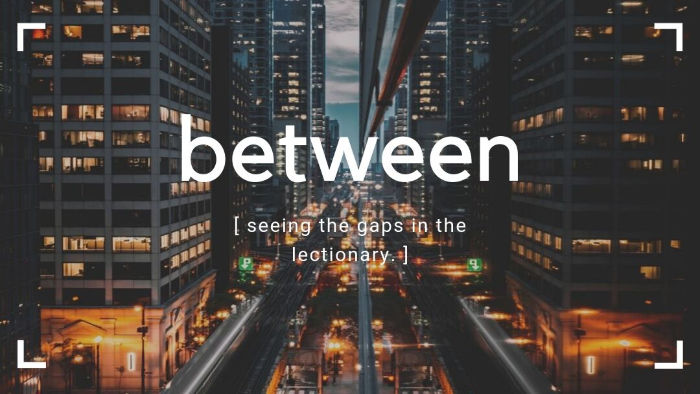A look at the gaps in the lectionary.
This week: the gap between Proper 11B + 12B
The text: switch to the gospel of John
After spending several weeks in the gospel of Mark, the lectionary shifts to John to tell the gap in the middle of last week’s gospel. Of course, once we’re in John, we’ll stick around in that gospel for a while.
We do get both parts of the story, tough. We get the feeding of the multitudes and Jesus walking on the water and getting mistaken for a ghost. So we get the same basic stories at least. But I’m not sure we needed John’s version of them in the end. At least not in place of Mark’s.
John’s version of the feeding of the multitudes is a more interactive and engaging story. It includes Andrew finding a boy willing to share his lunch. And it has the disciples do 99% of the work—where as Mark’s version seems to offer a sense of Jesus’s miraculous power once again and the disciples are there to set the table.
So John’s version of the story is totally better. But reading it means we miss something way more important to Mark in his telling: that the disciples fail to understand what they are witnessing.
After Jesus sends them on ahead, Jesus walks on water, and they think he’s a ghost, Jesus hops in the boat and the wind ceases. It is a total power move on Jesus’s part—and illustrates a second time about his supremacy over nature. then it says:
“And they were utterly astounded, for they did not understand about the loaves.”
So, because they didn’t understand the feeding of the multitudes, they are now astounded at the silencing of the wind.
Which, of course, is why I preached as much about what the lectionary skipped as what it contained this past week. This is an essential part of the story. It isn’t just that Jesus did the miracle. Or that he did a second. It reveals the way the disciples struggle to grasp what is really going on here.
This is the refrain that will continue in the story.
We need this for what is to come: when the disciples screw up. When they continue to miss the signs and the teachings—and when they get a bit full of themselves and assume they’re the special ones.
This isn’t a common element in the other gospels. But it is a big part of Mark’s gospel, however.
As much as I prefer John’s version of the feeding of the multitudes, it lacks the significance of the disciples misunderstanding. And in this way, it can be simply, another miracle. Something Jesus just does.
Perhaps we shouldn’t make that big of a deal about it. Maybe I’m investing too much in the failure of the disciples. It is possible.
But given who we are as followers of Jesus: flawed people with our own obsessions and confusions and misunderstandings: maybe there is a theme in Mark’s gospel that could use more of our attention. Lest we, too, misunderstand about the loaves.
